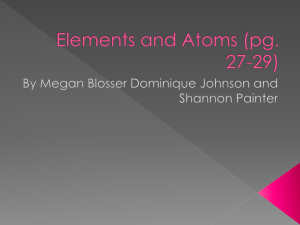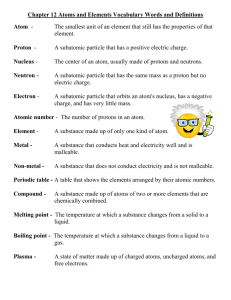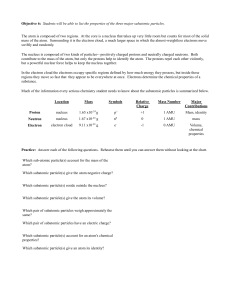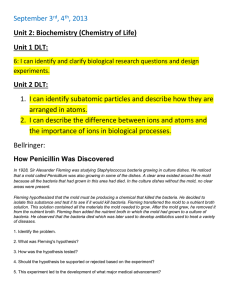Name
advertisement
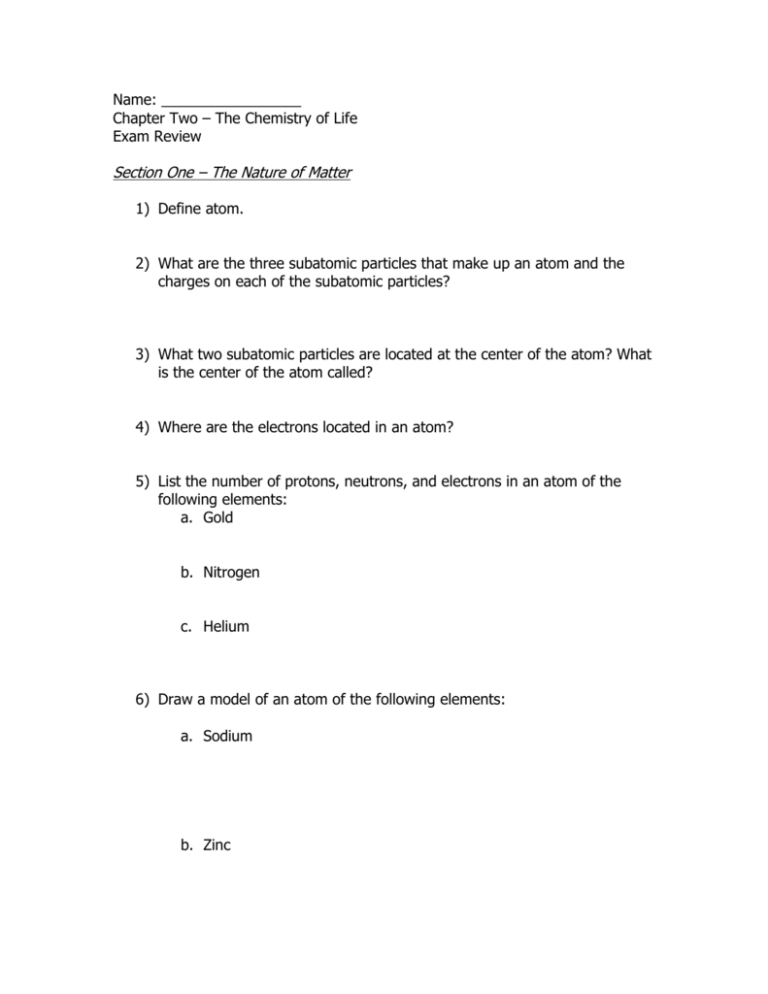
Name: _________________ Chapter Two – The Chemistry of Life Exam Review Section One – The Nature of Matter 1) Define atom. 2) What are the three subatomic particles that make up an atom and the charges on each of the subatomic particles? 3) What two subatomic particles are located at the center of the atom? What is the center of the atom called? 4) Where are the electrons located in an atom? 5) List the number of protons, neutrons, and electrons in an atom of the following elements: a. Gold b. Nitrogen c. Helium 6) Draw a model of an atom of the following elements: a. Sodium b. Zinc 7) Isotopes differ in the number of _____________________. 8) Define compound. 9) What is an example of a compound? 10)Define ionic bond. 11)Define covalent bond. 12)What subatomic particle is involved in bonding? Section Two – Properties of Water 13)Why is a water molecule polar? 14)The oxygen end of a water molecule has a slightly _________________ charge, and the hydrogen end of the water molecule has a slightly _________________ charge. 15)Define cohesion and give an example of cohesion. 16)Define adhesion and give an example of adhesion. 17)Define mixture. 18)Define solution. 19) What are the two parts that make up a solution? 20)If you are making Kool-Aid, what is the solvent and what is the solute? 21)Define suspension and give an example of a suspension. 22)What is the pH range for an acid? Give an example of an acid. 23)What is the pH range for a base? Give an example of a base. 24)What is the pH of a neutral substance? Give an example of neutral substance. Section Three – Carbon Compounds 25)What are the four macromolecules of life? 26)Define carbohydrate and give an example of something that provides carbohydrates. 27)Define lipid. 28)Define nucleic acid. 29)What essential item in cells do nucleic acids make up? 30)Define protein and give an example of something that provides protein. Section Four – Chemical Reactions and Enzymes 31)Define chemical reaction. 32)Label the reactants and the products in this chemical formula. CO2 + H2O H2CO3 33)Define activation energy. 34)What do enzymes do? 35)What are the reactants of an enzyme-catalyzed reaction known as?
